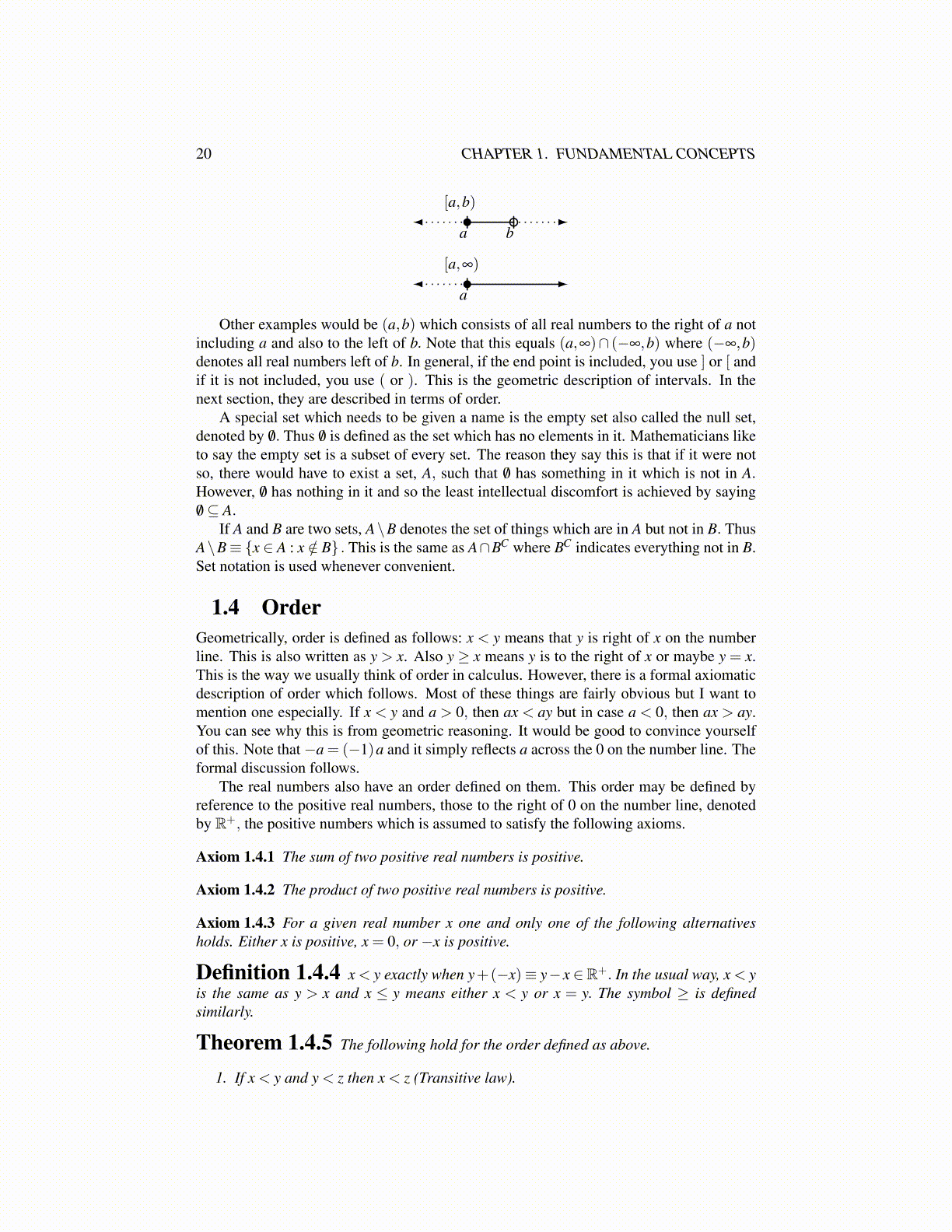
20 CHAPTER 1. FUNDAMENTAL CONCEPTS
a b
[a,b)
a
[a,∞)
Other examples would be (a,b) which consists of all real numbers to the right of a notincluding a and also to the left of b. Note that this equals (a,∞)∩ (−∞,b) where (−∞,b)denotes all real numbers left of b. In general, if the end point is included, you use ] or [ andif it is not included, you use ( or ). This is the geometric description of intervals. In thenext section, they are described in terms of order.
A special set which needs to be given a name is the empty set also called the null set,denoted by /0. Thus /0 is defined as the set which has no elements in it. Mathematicians liketo say the empty set is a subset of every set. The reason they say this is that if it were notso, there would have to exist a set, A, such that /0 has something in it which is not in A.However, /0 has nothing in it and so the least intellectual discomfort is achieved by saying/0 ⊆ A.
If A and B are two sets, A\B denotes the set of things which are in A but not in B. ThusA\B ≡ {x ∈ A : x /∈ B} . This is the same as A∩BC where BC indicates everything not in B.Set notation is used whenever convenient.
1.4 OrderGeometrically, order is defined as follows: x < y means that y is right of x on the numberline. This is also written as y > x. Also y ≥ x means y is to the right of x or maybe y = x.This is the way we usually think of order in calculus. However, there is a formal axiomaticdescription of order which follows. Most of these things are fairly obvious but I want tomention one especially. If x < y and a > 0, then ax < ay but in case a < 0, then ax > ay.You can see why this is from geometric reasoning. It would be good to convince yourselfof this. Note that −a = (−1)a and it simply reflects a across the 0 on the number line. Theformal discussion follows.
The real numbers also have an order defined on them. This order may be defined byreference to the positive real numbers, those to the right of 0 on the number line, denotedby R+, the positive numbers which is assumed to satisfy the following axioms.
Axiom 1.4.1 The sum of two positive real numbers is positive.
Axiom 1.4.2 The product of two positive real numbers is positive.
Axiom 1.4.3 For a given real number x one and only one of the following alternativesholds. Either x is positive, x = 0, or −x is positive.
Definition 1.4.4 x < y exactly when y+(−x)≡ y−x ∈R+. In the usual way, x < yis the same as y > x and x ≤ y means either x < y or x = y. The symbol ≥ is definedsimilarly.
Theorem 1.4.5 The following hold for the order defined as above.
1. If x < y and y < z then x < z (Transitive law).